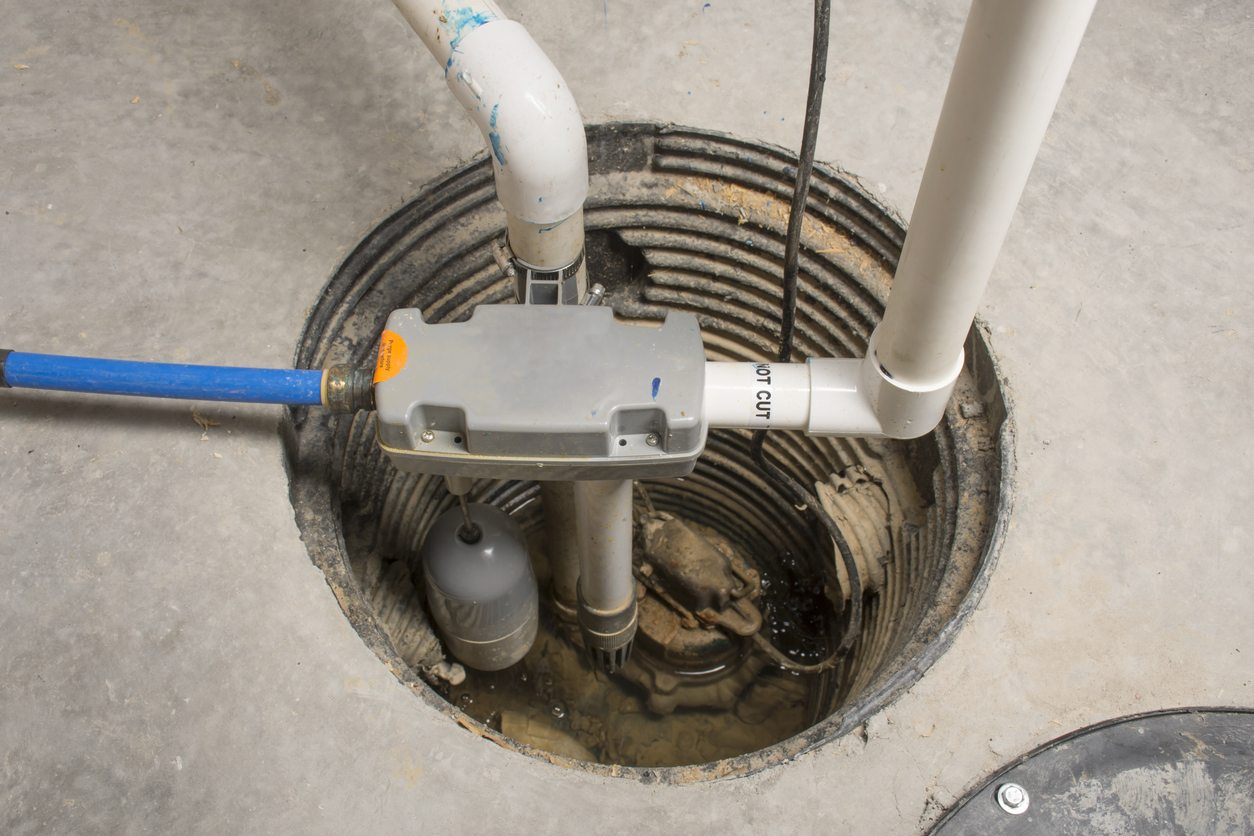A sump pump is your first line of defense against basement flooding, but when it fails, water can quickly invade living spaces, damage belongings, and foster mold growth. At BROADCO Property Restoration, we’ve seen countless homes in Michigan suffer unnecessary losses because their sump pumps weren’t maintained or backed up properly.
In this guide, we’ll go over the five most common reasons sump pumps fail, share preventative measures and troubleshooting tips, and explain when it’s time to call in our experts. By understanding these issues and taking proactive steps, homeowners can keep their basements dry, protect their property, and avoid costly water damage repairs.
Top 5 Reasons for Sump Pump Failure
1. Power Faults
When the power goes out during a storm, your sump pump stops working—exactly when you need it most. Tripped breakers or GFCI outlets can also unexpectedly cut power. To prevent this, install dedicated circuits, test breakers regularly, and consider battery or generator backups. By guaranteeing your pump always has power, you can make sure it operates even during severe weather events.
2. Float Switch Malfunction
The float switch tells your pump when to turn on and off. If debris gets caught under the float, or if the arm is misaligned, the pump may never activate. At BROADCO, we can prevent this by clearing away sediment, checking for obstructions, and adjusting the float arm so it moves freely. Regularly testing the switch—by lifting the float manually—can help you catch malfunctions before they lead to flooding.
3. Clogged or Frozen Discharge Lines
Even a perfectly functioning pump can’t expel water if its discharge line is blocked or frozen. Leaves, ice, or sediment can obstruct flow, causing backups. It’s important to clear debris from the line each season, maintain a slight downward slope, and insulate exposed piping to prevent freezing. These steps ensure that water expelled by the pump flows freely away from your foundation, safeguarding your basement against spring thaw or winter storms.
4. Burned Out Pump
If your sump pump runs continuously—due to high water tables or persistent leaks—it can overheat and fail prematurely. BROADCO’s team can combat this by installing larger-capacity pumps in areas with heavy groundwater and by sealing foundation cracks to reduce inflow. Using dual-pump systems also allows one unit to rest while the other operates, extending the lifespan of both pumps and supporting reliable performance during extended wet periods.
5. Lack Maintenance
A sump pump neglected is a sump pump doomed. Corroded parts, worn seals, and clogged inlets can all lead to failure. That’s why we recommend scheduling semi-annual inspections with BROADCO, during which we clean the basin, test the motor, lubricate moving parts, and replace worn components. This routine care prevents unexpected breakdowns and gives us confidence that your pump will perform when called upon.
DIY Troubleshooting Your Sump Pump
Checking Power and Resetting Breakers
When your sump pump stops, the first step is to confirm it’s receiving power. Locate the dedicated circuit breaker or GFCI outlet, reset any tripped breakers, and confirm the pump is firmly plugged in. If the pump still won’t start, test the outlet with a lamp or voltage tester to rule out electrical issues.
For peace of mind during storms, we recommend installing a battery backup system or a generator transfer switch. These solutions keep your pump running when the grid fails, preventing basement flooding even during power outages.
Cleaning and Testing the Float Switch
A stuck float switch is a common culprit in pump failures. Begin by unplugging the pump and removing it from the pit. Try clearing away debris—like gravel, paper, or sludge—from the float arm and pivot point to restore its movement.
After reassembly, manually lift the float to trigger the pump, confirming it activates and shuts off correctly. Adjusting the float arm’s height allows the pump to turn on at the right water level. Regularly testing this mechanism will keep you ahead of failures and help maintain reliable operation.
Clearing Discharge Lines & Insulating Pipes
Blocked or frozen discharge lines can render a pump useless. Inspect exposed piping for kinks or blockages, using a plumber’s snake or high-pressure water jet to clear obstructions. Confirm the line slopes downward away from your foundation to prevent water from settling.
During cold months, wrap exposed pipes with heat tape and foam insulation to prevent freezing. These simple steps guarantee that expelled water moves unimpeded, safeguarding your basement against backup and ice dam issues.
When to Call BROADCO for Professional Help
Signs You Need Expert Intervention
If your pump runs continuously without lowering the water level, emits grinding or rattling noises, or shows visible corrosion and wear, it’s time to call in the pros.
Persistent leaks, sudden performance drops, and electrical burning smells also signal internal damage that DIY fixes can’t address.
BROADCO’s Sump Pump Backup Solutions
Beyond repairs, we offer top-tier sump pump backup systems to keep your pump operational under all conditions. Our battery backup units automatically engage during power outages, while generator-based backups provide extended runtime.
For homes with severe water table issues, we install water-powered backup pumps that never rely on electricity. Each solution integrates seamlessly with your existing setup and includes professional installation, testing, and routine maintenance plans. With our expertise, we ensure continuous protection against basement flooding.
Protect Your Home with BROADCO’s Sump Pump Services
When sump pumps fail, the risk of a flooded basement and costly water damage is high. At BROADCO Property Restoration, we specialize in comprehensive sump pump solutions—from preventive maintenance and emergency repairs to advanced backup installations.
The Leader in Michigan Sump Pump Solutions
We make sure your system remains reliable year-round, protecting your home and possessions from unexpected flooding. Reach out now, or call us at 877-450-6250 to schedule your sump pump check-up or for restoration after water, fire, storm, or mold damage!


